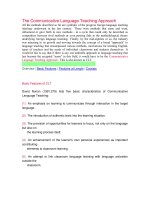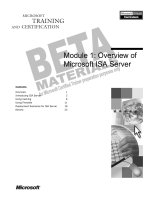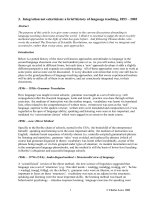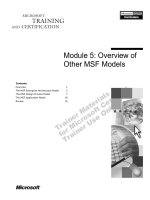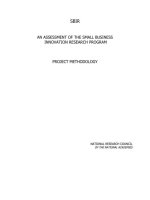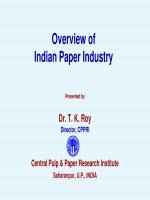Overview of Language Teaching Methodology.doc
Bạn đang xem bản rút gọn của tài liệu. Xem và tải ngay bản đầy đủ của tài liệu tại đây (33.56 KB, 1 trang )
Overview of Language Teaching Methodology
The word "methodology" is itself often misinterpreted or ill-understood. It is
usually given lip-service as an explanation for the way a given teacher goes
about his/her teaching, a sort of umbrella-term to describe the job of teaching
another language. Most often, methodology is understood to mean methods in a
general sense, and in some cases it is even equated to specific teaching
techniques. It does (or should) in fact mean and involve much more than that.
I've found that Brown's (1994:51) definitions (reflecting current usage at the time
and drawn from earlier attempts to break down and classify elements to do with
methodology) are the most useful:
Methodology
The study of pedagogical practices in general (including theoretical
underpinnings and related research). Whatever considerations are involved in
"how to teach" are methodological.
Approach
Theoretical positions and beliefs about the nature of language, the nature of
language learning, and the applicability of both to pedagogical settings.
Method
A generalized set of classroom specifications for accomplishing linguistic
objectives. Methods tend to be primarily concerned with teacher and student
roles and behaviors and secondarily with such features as linguistic and subject-
matter objectives, sequencing, and materials. They are almost aways thought of
as being broadly applicable to a variety of audiences in a variety of contexts.
Curriculum/Syllabus
Designs for carrying out a particular language program. Features include a
primary concern with the specification of linguistic and subject-matter objectives,
sequencing, and materials to meet the needs of a designated group of learners in
a defined context.
Technique
Any of a wide variety of exercises, activities, or devices used in the language
classroom for realizing lesson objectives.


